As I departed DeLand airport on Saturday at the close of Aero Showcase 2022, I recalled multiple conversations with attendees regarding the airplanes on display. Over and over I was asked if one of the displayed aircraft could benefit from a higher weight under Mosaic rules.
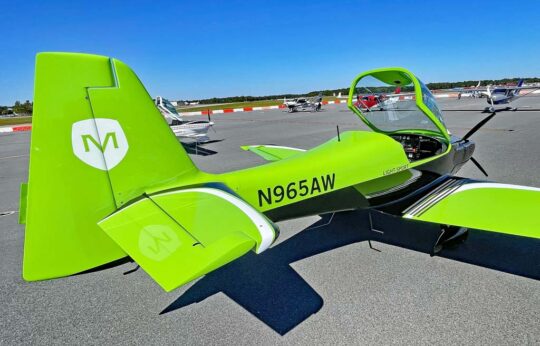 The short answer, I told them, is yes. A good many LSA were initially designed and subsequently tested to higher weights than the 1,320 pounds permitted under present FAA rules. What will happen to these 1,320-pound LSA when higher weight Mosaic LSA come out, some asked? Will these current LSA become obsolete?
The short answer, I told them, is yes. A good many LSA were initially designed and subsequently tested to higher weights than the 1,320 pounds permitted under present FAA rules. What will happen to these 1,320-pound LSA when higher weight Mosaic LSA come out, some asked? Will these current LSA become obsolete?
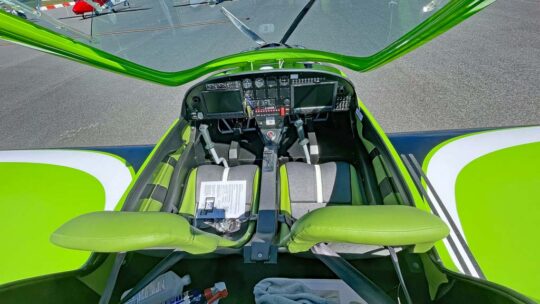 I believe they will not, because any LSA you buy today will work just as well under Mosaic. It may not carry as much or have some other attribute, but neither will current LSA cost more as will larger and better equipped Mosaic LSA.
I believe they will not, because any LSA you buy today will work just as well under Mosaic. It may not carry as much or have some other attribute, but neither will current LSA cost more as will larger and better equipped Mosaic LSA.
However, many — perhaps a third, maybe half — of all LSA on the market today have actually been constructed and tested to carry somewhat higher weights. Several models come to mind that could operate within ASTM safety margins at 1,600 or 1,700 pounds. A manufacturer would probably need to re-declare* that their existing LSA can handle higher weight but that may be sufficient to win approval for what amounts to a revised Special Airworthiness Certificate. Just like that — at least in theory — a current-day LSA could carry a few hundred more pounds. Are you interested yet?
The “New” GA?
In 1956, the Cessna 172 was introduced with a base price of just $8,995. The government’s CPI (that many believe understates true dollar inflation) says that today, that $9,000 would be around $100,000. Yet a Cessna 172 sells for $400,000 base price. It’s a better airplane in various ways (e.g., better panel instruments) but the basic airframe has hardly changed.
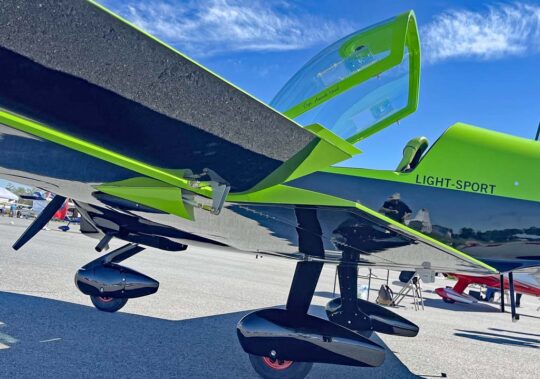
A leading candidate in 2005 was Flight Design’s CT, which sold for around $60,000, though it was rather sparsely equipped by today’s LSA standards. At the time, that was widely considered an acceptable cost for a new LSA.
Today, dollar inflation makes that figure around $100,000 but that’s before adding glass cockpits, airframe parachutes, and autopilots, much less retractable gear or adjustable props. Leather interiors and fancy paint jobs add more as do major shipping expenses if imported. All these facts help explain why LSA are often $150,000 today and can easily exceed $200.000.
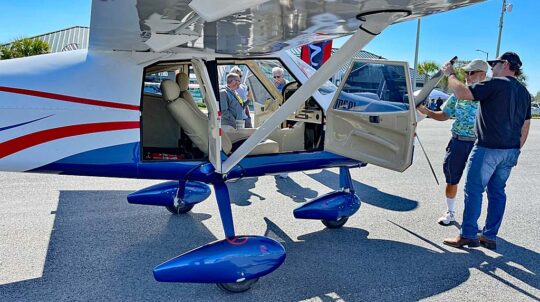
Montaer’s MC01 is one of the LSA that could quickly declare to a higher weight once Mosaic passes. Many other LSA have similar possibilities.
Is this too expensive for most of us? Yes, but…
Used LSA are relieving those costs and the used LSA market is highly active; used models in good shape are snapped up quickly. Kits that can be flown by Sport Pilots can save tens of thousands (via your own labor). And for those on the tightest budgets, some Part 103 ultralights still retail for under $20,000 — a rather amazing fact by itself.
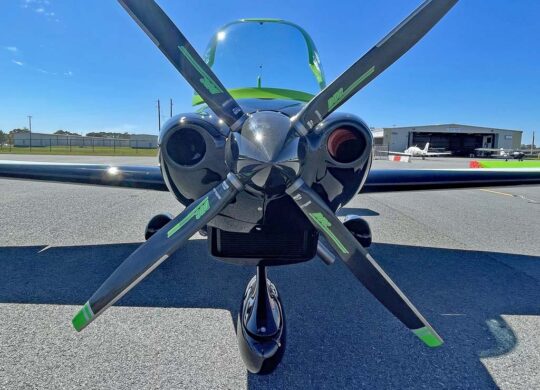
The good news then? Buyers looking for lower purchase prices can choose a late-model used LSA, while early adopters upgrade to the latest and greatest Mosaic LSA.
S u c c e s s !
Measured by Aircraft Sales
By the end of this two-day event (on Friday and Saturday), a few of us estimated about ten aircraft were sold.
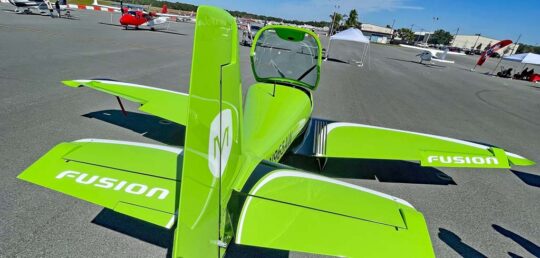
The weather was about perfect, though breezy both days. DeLand puts on a kind of day-long airshow with skydivers parachuting down almost continuously all the while aircraft are taking off and landing. With no control tower, regular DeLand pilots interact easily with the skydiving operations. It gives Aero Showcase visitors a visual treat numerous times per day.

Was Aero Showcase 2022 a success? Yes, it was! Ask those pilots who chose to buy a new airplane. Their smiles say it all.
ARTICLE LINKS:
- Magnus Aircraft in the USA, represented by The Aviator Family
- Article about the aerobatic aspect of Magnus Fusion 212
- Aero Affinity, representing Magnus, Montaer, Aero Adventure, Seamax, and BOT
- Video about Mosaic (from September 2022) featuring many questions and answers
* After assuring an aircraft 100% meets ASTM standards, an LSA manufacturer “declares” on an official FAA form signed by an appropriate person in the company that their model has documentation proving the aircraft meets every ASTM standard. FAA has audited many companies to assure compliance but has not repeated that for model changes by manufacturers they consider reliable. To gain more weight after Mosaic becomes a regulation, a manufacturer could evaluate to determine if their design can prove compliance to a higher weight. If justified, they could declare to the higher weight, possibly with no change to the airframe.



My bet is that manufacturers will not accept the risk of grandfathering in their existing fleet with a change to the POH to allow higher Mosaic weight. There would be no benefit and only risk to them. Perhaps same exact model but produced after Mosaic is effective might get the POH upgrade but my bet is that the existing fleet won’t benefit, as the manufacturer won’t retro-revise MTOW or other specs. How could CRUZ re-certify a 2009 SportCruiser? Mosaic would be great for the LSA market, but not mean much to existing owners.
We’ll see. A couple of observations with this exciting article. Existing new LSA under the current definition will not become obsolete. There are many demographics served in this area of lighter aviation and the 1320 gross weight LSA will continue to be in demand. As you correctly point out, Dan, the heavier and more capable “M” LSA will cost more, suiting the desires of many. Aviation costs by the pound. Many will continue to enjoy the benefits, performance and economy of existing LSA, new or used. New (1320 GW) SLSA will be an affordable alternative to the new “M” LSA, so I don’t believe the 1320 GW market will turn to just used LSA. The new LSA market is strong now, as is the used LSA market.
One last observation. My introductory “We’ll See” comment refers to this: Human nature is to always want just a little more. We saw this in the early days of ultralights when 254 pounds sounded great, until it seemed that 330 power would sure be better. SLSA came out with an industry agreed upon 1320 which has been enough until it wasn’t… And so, I suspect that the 1600, 1700, or whatever pound “M” gross weight will be great until we want just a little more, which will exist in the next level of aircraft.
The great news is, we aren’t losing anything, just gaining more options.
1600-1700 lbs will be a game changer for LSA. Two people, bags, and full tanks sounds great. Raise the top speed to 140 knots and the Revolution will be complete. Even at 120 indicated I can get everywhere I want to go tho. Now if the wait wasn’t so stupid.
Yes. This.
…And ASTM needs to agree on standards for flight into IMC. I don’t see how we could have a Brazilian-style 3,000lb aircraft category without resolving the IFR ambiguity.
ASTM does have a subcommittee that is working on IFR, but “IFR light“ is harder to devise than it may seem.
In addition, surveys of LSA owners have shown a very small percentage actually seek this capability.
Thanks Dan,
It will be interesting to see if this changes once the LSA category is expanded to potentially larger and more capable aircraft. I have heard some predictions of the Mosaic LSA encompassing 172s and similar airframes, which include the ability to fly into IMC. Also, if something like the Sling HW were reclassified as Mosaic LSAs some sort of IMC capability would need to be factored in as the aircraft is intended on being a comfortable cross-country platform.
Also… maybe it is my common sense sneaking in but I just fundamentally don’t see how a clapped out 150 is more capable of handling IMC than a modern LSA with a GTN650 and dual G3Xs.
One point: Mosaic won’t “encompass” a Cessna 172. A Skyhawk will remain a Standard Category aircraft but it appears likely that a 172 operator may be able to exercise Sport Pilot certificate privileges — meaning no aviation medical.
Mosaic LSA will be approved as Special Airworthiness certificate holders.
“Can” and “Will” are far apart. I don’t know that I ever will fly IFR but if I buy a bird it sure would be nice to know I can go that option with appropriate training. “Most people won’t use it” isn’t a good justification for limiting those who will.
I have no disagreement with your view. I am an instrument-rated pilot and would like an airplane that had the equipment on board to help me get out of a tough spot. However, the effort to create a standard for a small fraction of recreational pilots is significant and the cost of adding the right equipment to allow this may also be significant. Nonetheless, I feel sure it will happen at some point because it has energy behind it.